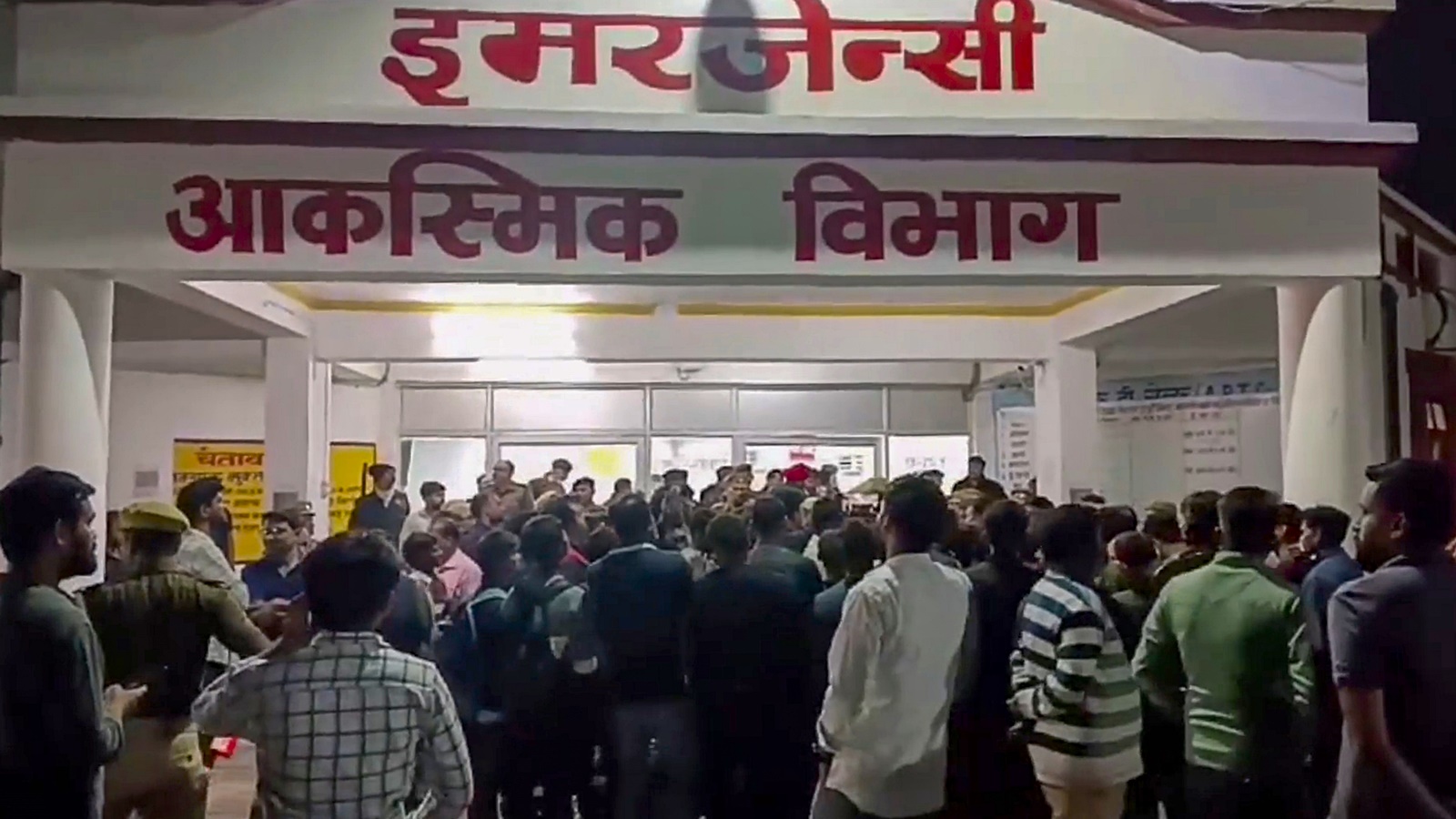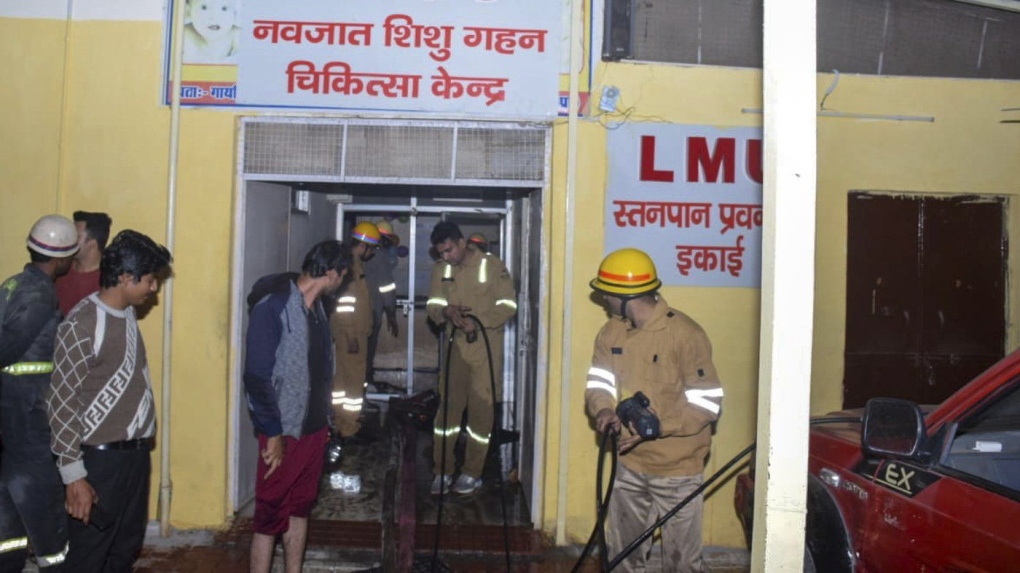A catastrophic fire engulfed the neonatal unit of Maharani Lakshmibai Medical College in Jhansi, India, late Friday, killing 10 newborns and injuring 17. Of the 49 infants in the ward, emergency responders managed to rescue 38, relocating them to safer areas of the hospital.
Deputy Chief Minister Brajesh Pathak confirmed that efforts are underway to identify the remaining three victims, while 17 injured babies receive treatment in various facilities. Witness accounts and visuals from the scene reveal the horrifying aftermath, with anguished families awaiting updates.
Preliminary investigations suggest the fire was caused by a faulty oxygen concentrator, with the resulting flames and smoke overwhelming the ward. Firefighters arrived to find the unit engulfed and had to break windows to reach the trapped infants. Hospital staff worked to stabilize rescued babies, some only days old, using intravenous drips in adjacent wards. Despite their efforts, concerns have arisen over the hospital’s ability to respond to such emergencies effectively, as alarms reportedly failed to activate during the blaze.

Fire at Jhansi Medical College Neonatal Unit Claims 10 Lives, Raises Questions on Safety Protocols
The incident has drawn sharp criticism from families and safety advocates, who point to significant lapses in protocol. While a safety audit and fire drill were conducted earlier this year, the effectiveness of these measures is being questioned. Witnesses claim hospital staff acted only after spotting smoke and flames, potentially delaying lifesaving actions. Adding to the anguish, one infant remains unaccounted for, further intensifying calls for accountability and reform.
Political leaders have expressed grief and offered support to affected families. Uttar Pradesh Chief Minister Yogi Adityanath announced compensation of $5,900 for each bereaved family, while Prime Minister Narendra Modi called the tragedy “heart-wrenching” and extended his condolences. Officials have vowed to investigate the incident thoroughly and hold those responsible for any lapses accountable. Local authorities are also examining the broader implications of this failure in safety measures.
This tragedy reflects a broader pattern of safety issues across India, where poor maintenance and lax enforcement of regulations lead to frequent disasters in public facilities. Fires caused by electrical faults and inadequate emergency preparedness have resulted in numerous casualties, including a similar incident in New Delhi six months ago. These recurring events underscore the urgent need for systemic reforms to prevent such devastating loss of life.











































